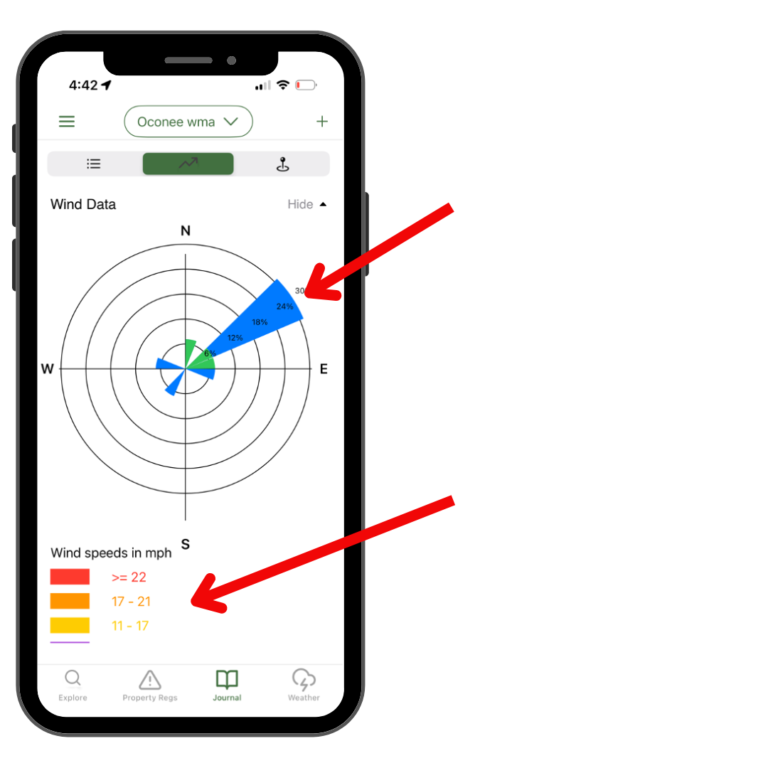To find the relevant regulations for your hunt area:
Once you have done this, Hunt Regs will display only the necessary information you need to stay legal. This includes the zone you are in, season dates, bag limit, any restrictions there may be, as well as any important side notes.
To manage your properties, select the button in the top center of the screen. Once selected, you will be taken to the My Properties screen. Here, you can switch your property selection, create new properties, edit old properties, and get direction to your properties.
When creating a property, keep in mind that we are using the location you drop your pin to gather the regulations for that property. If your property is split by regulations zones, we will only recognize the zone where your pin was dropped.

On the Journal Tab, move the green slider bar to the arrow icon in the middle
Wind Data


The ability to manipulate all of the information associated with your journal entries and then see them displayed on a simple graph is what makes the Hunt Regs Journal so valuable. Unlike a paper journal, our journal allows you to compare and contrast all of your hunting variables, from species, and animal types to the wind directions and moon phases they have moved on in the past. This manipulation allows you to use your historical data of your target animals at your location and determine when those specific animals are most likely to move.
For example, you have been targeting a specific buck, who we’ll call Frank, for the last two years. You have recorded journal entries for all of your trail camera pictures and times you have seen him on stand. Now, you use Hunt Regs to develop a pattern. First, you filter all of your journal entries to only include Frank. Then, you look at the map, and see that out of the 25 entries you have for Frank, 17 are at your creek bed stand location, and 8 are on your food plot, so you elect to add a filter for the creek bed stand. Then, you look at the graphs. You see that the vast majority of sightings for Frank have been on a North Wind at the creek bed stand. You also notice that he typically only moves if it is blowing 10 mph or more. Finally, you see that 14 of those 17 entries were between 6 and 7 pm. Just like that, you have an actionable Strike Smart plan based on YOUR OWN DATA OF THIS DEER: Your best bet is to hunt your creek bed stand, on a north wind of 10 mph or more, between 6 and 7 pm. This plan is not based on how animals are supposed to act, but is instead based on what YOU have actually WITNESSED about the behavior of YOUR target animals, and that is what makes it so effective.